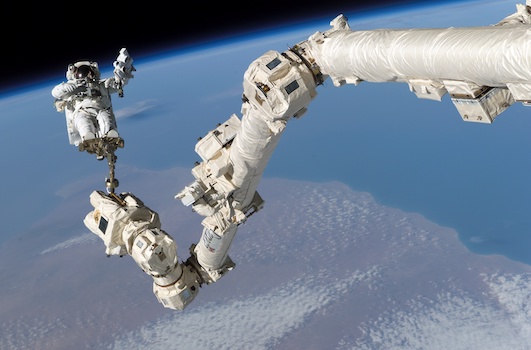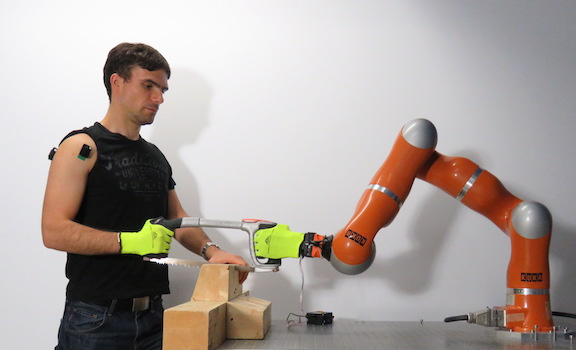A helping arm to the moon

Early next month, when a Canadian astronaut is named for the Artemis 2 moon-circling mission in 2024, that selection will reflect decades of support by Canadian industry.
The economic impact of space is so vast — literally and figuratively — that a simple calculation is not easily possible. Canada's government-funded spaceflights on NASA missions were all brokered before Artemis 2, through this country’s spending on Canadarm, Canadarm2, Dextre, and related robotic products. The pedigree of these devices extends beyond the Canadian Space Agency (CSA) to various parts of the government, including the National Research Council, which administered the astronaut program in the early days of spaceflight.
Those astronaut flights accompanied a plethora of science experiments and technology that were key to understanding spaceflight — such as the development of laser ranging to calculate safe spacecraft distances during docking, or studies of human health to combat microgravity conditions. These intangibles, in medicine and technology, are likewise nearly impossible to count.
And now, nearly 40 years after Canada's first astronaut selection on Dec. 5, 1983, a Canadian will be ported to lunar realms for the first time. Jeremy Hansen, Josh Kutryk, David Saint-Jacques, and Jenni Sidey-Gibbons are the available astronauts for flights; one of them will be brought on board Artemis 2, courtesy of Canadarm3.
This next-generation robotic arm will be placed upon NASA's planned Lunar Gateway space station, which is led by NASA but includes international contributions to establish a hub in lunar orbit to support surface missions. Those missions begin with Artemis 3, slated to launch in 2025 or later. Meanwhile, Canadarm3 will allow Canada to negotiate further seats for future International Space Station or Artemis missions.
Budget boosts
This bundle of moon funding dates back to the budget of Feb. 28, 2019, when Prime Minister Justin Trudeau and his government said it would spend $2.05 billion in space over 24 years. This big envelope got even bigger with the 2023 federal budget, which allocated $1.2 billion over the next 13 years for the CSA to create a lunar surface vehicle, plus another $1.1 billion over 14 years for ongoing participation in the International Space Station. This latest budget also added another $150 million for lunar science experiments funded under CSA's Lunar Exploration Accelerator Program, as well as $76.5 million for science on the Lunar Gateway station.
That earned a big thank-you from MDA, the company helming past generations of robotic arms after taking over Spar Aerospace. It will lead development of Canadarm3 along with hundreds of Canadian companies supporting it. In March 2022, CSA described the development as ongoing, with a 2027 delivery date and a tranche of funding for MDA that comes to almost $270 million.
"The expected economic benefits from Canadarm3 are estimated to contribute over $70 million annually to Canada's GDP, and create and maintain some 630 high-quality jobs for Canadians over a 12-year period," stated the CSA announcement. MDA plans to allocate 200 jobs for this phase alone, with other jobs ensuing at partner companies.
On the wider scale, CSA says the space sector has a GDP multiplier of 1.90, which means that every dollar the space sector contributed to GDP created $0.90 in GDP contributions from other parts of the economy.
Tabulated this way, goods and services in Canada's space sector have already contributed $2.5 billion to Canada's GDP, the CSA said in a 2020 State of the Canadian Space Sector report. And in employment numbers, it is believed that space contributes 22,879 full-time equivalent jobs to the Canadian economy — and this is likely an understatement, since educators, journalists, social media influencers, artists, and numerous others can and do make their full-time living in Canada in space or closely aligned fields.
Typically, Canadian space revenues are fairly evenly divided between domestic sources and exports. For survey year 2019, the respective shares were reported as 58 percent for domestic and 42 percent for exports. It is too early to calculate Canadarm3's impact, but already MDA has achieved resales of Canadarm3 technology to Houston-based Axiom Space for space station work. Canadarm3 spin-offs will also likely accrue to other sectors that need robotic arms, like surgery or mining; similarly, the AI it will use for space station repairs should find other applications.
There are also the intangible benefits of Canadarm3 that will begin to bear fruit with Artemis 2. When a person goes into space in this country there tends to be much more attention put on space than usual. The astronaut goes on tours, does media appearances, goes to museums, and generally becomes quite available for the public and especially for children considering careers in science, technology, engineering, and math.
Space directly affects many ordinary folks, as they track an astronaut’s career. Much of the economic evidence for this impact is anecdotal and limited, but some cases are nothing short of spectacular. This author's favorite is how Jenni Sidey-Gibbons got interested in space. At the tender age of 3, the youngster put together a scrapbook about a space mission, which featured none other than Roberta Bondar's premiere Canadian female spaceflight in 1992. Check out their 2019 meeting here on YouTube as the women, decades later, leaf through the scrapbook and talk about Canadian space.
R$
| Organizations: | |
| People: | |
| Topics: |
Events For Leaders in
Science, Tech, Innovation, and Policy
Discuss and learn from those in the know at our virtual and in-person events.
See Upcoming Events
You have 0 free articles remaining.
Don't miss out - start your free trial today.
Start your FREE trial Already a member? Log in
By using this website, you agree to our use of cookies. We use cookies to provide you with a great experience and to help our website run effectively in accordance with our Privacy Policy and Terms of Service.





